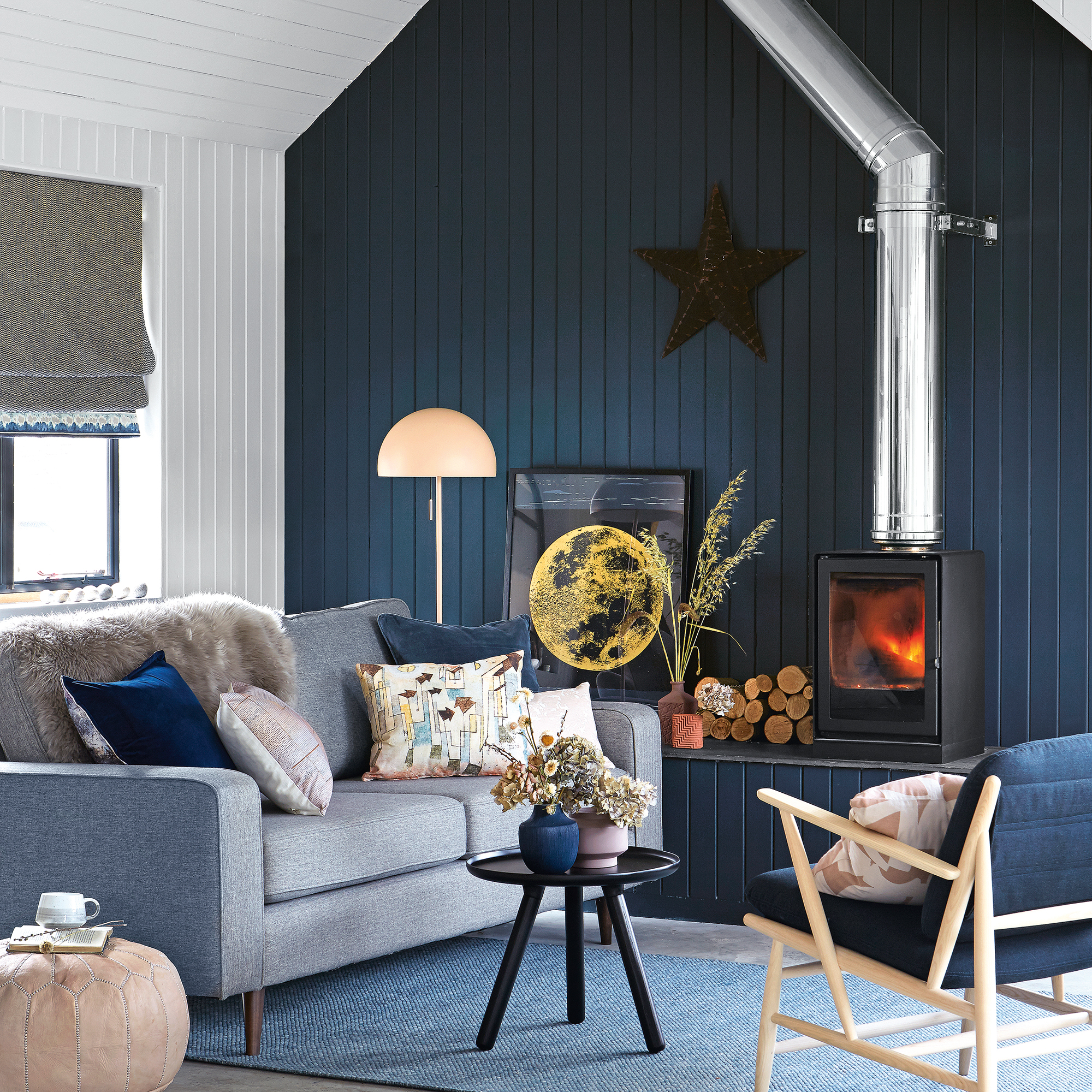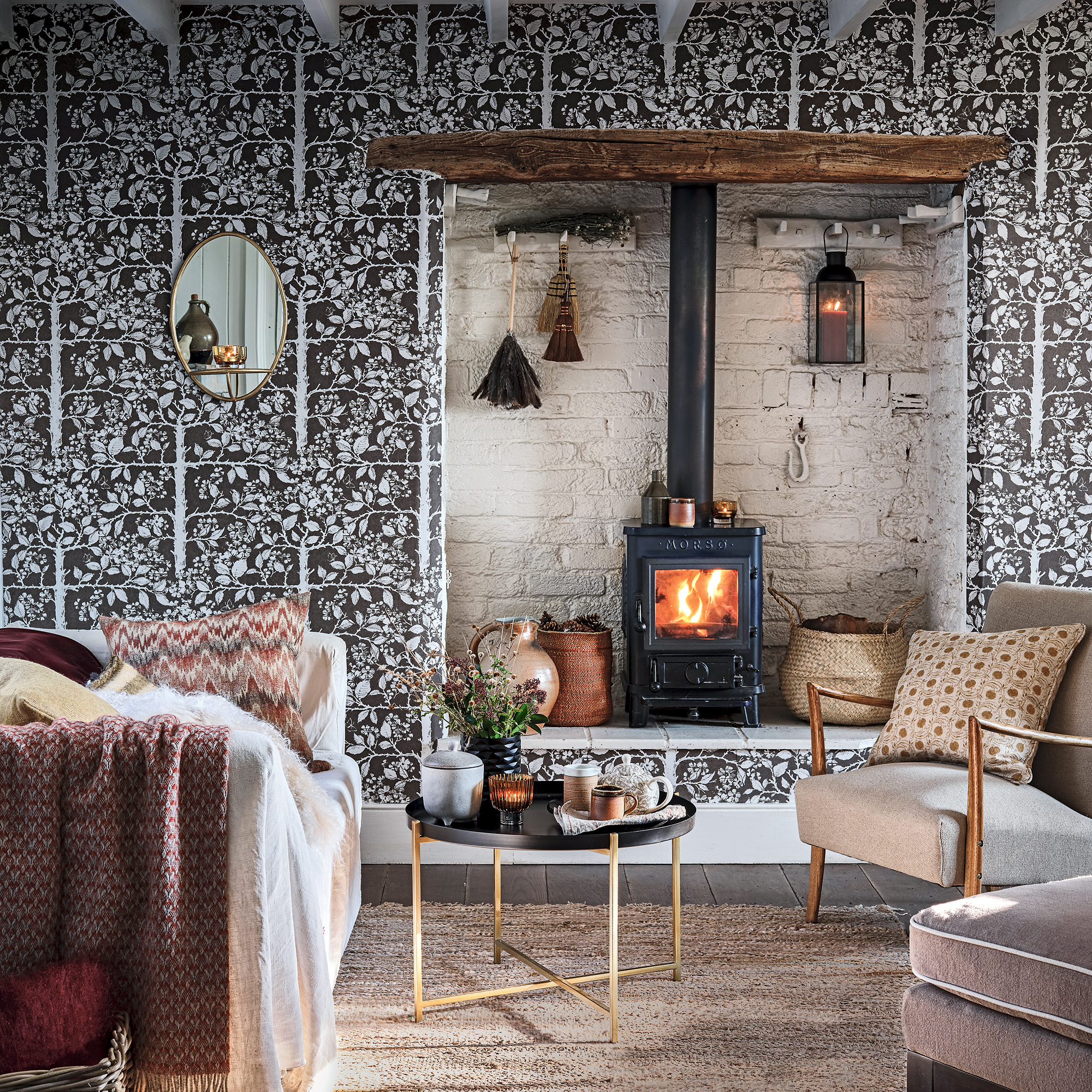
If you have a log burner in your living room and a bag of coal sitting in your shed, you may be asking yourself, ‘Can I burn coal in a wood-burning stove?’ But while coal is a popular fuel, it’s important to understand that there are strict rules when it comes to these fuel types.
Yes, knowing what you can and can’t burn in a wood-burning stove is more important than ever, thanks to the government's new wood burner regulations. And while wood-burning stoves are certainly a key player in the wood burners vs central heating debate, improper use of a log burner can have disastrous consequences for your health and your home.
That’s why you should always think twice before burning coal on a wood-burning stove and always do your research before burning anything you’re unsure of. And to help you understand more, we’ve spoken to the experts urging you to stay away from coal.
Can I burn coal in a wood-burning stove?
In the past, burning coal on a wood-burning stove was common practice. But as we’ve learned more about toxic emissions and how certain fuels burn, experts advise against using coal in a wood-burning stove.
Stuart Fitzgerald, Managing Director at ecoblaze, says, ‘Burning coal in a wood stove isn’t advisable. Coal burns much hotter than wood and at temperatures that wood-burning stoves have not been designed for. Consequently, burning coal will only end up damaging your stove.’
However, using the incorrect fuel won’t just harm the wood-burning stove itself. It will also affect how the fire burns and, ultimately, how it will keep your house warm in the winter.
‘Wood fires require air from above for effective combustion,’ adds Stuart. ‘And they typically burn better with a small amount — around 1cm — of residual ash in the stove. The ash insulates the wood burner, helping fires to catch more quickly.’
‘But coal requires air from below. So, unless your stove is raised to accommodate this, the fire just won’t burn as effectively. You also need to remove the ash frequently, and while a multi-fuel stove will have a grate and ash tray built-in to do this safely, a wood-burning stove will not.’
‘As a result, incomplete combustion becomes more likely, with the fire releasing high levels of carbon monoxide. If inhaled, this odourless gas can cause headaches and nausea and even be fatal.’
Because of this, the answer to ‘Can I burn coal in a wood-burning stove?’ is a definite no.

What not to burn on a wood-burning stove
Although you should never burn coal on a wood-burning stove, it seems as though it’s not the only fuel you should avoid if you have a log burner in your home. You should also avoid burning the following:
Painted wood: While it can be tempting to shove any old wood you no longer need on the wood-burning stove, you should never burn painted or treated wood in a wood-burning stove. That’s because these paints and treatments are laden with chemicals that can release potentially toxic fumes into your home.
Wet wood: Although many people choose to store wood for their wood-burning stove outside, this is doing more harm than good. You should never burn wet wood on a wood-burning stove, as the moisture content is way too high. Not only will you struggle to maintain a fire made with wet wood, but it can also result in a build-up of soot.
Plywood or chipboard: Plywood and chipboard are both cheap woods that can help to bring your budget decorating ideas to life. However, these materials aren’t 100% wood. They’re often stuck together using glues and resins that should never be burned. Not only that, but these softwoods also produce a lot of ash when burned, which can clog up your wood-burning stove quicker than alternative fuels.
Paper or cardboard: Stuart says, ‘It can be tempting to use up scraps from around the house, such as scrap paper and cardboard, to start a fire, but it isn’t advisable. Inks, glues and other chemicals within these materials can be toxic, and burning them could release these chemicals directly into your home.’

What you can burn on a wood-burning stove
The name doesn’t lie when it comes to wood-burning stoves. The best fuel for a wood-burning stove is, of course, wood. However, you can’t just head into your garden and chop down a tree to keep your fire roaring.
‘For the most efficient burn, use firewood with a moisture content of less than 20 per cent,’ explains Stuart. ‘Wood with a lower moisture content will burn more cleanly, producing more heat with less smoke and soot. Kiln-dried firewood is the ideal choice for this.’
Because of this, it’s generally safer to buy your wood rather than dry it yourself. But if you do choose to dry your own woo - whether that be hardwood or softwood - you should always make sure that it’s dry enough to be burned. For this, you’ll need a moisture meter, like this AZUNO Digital Wood Moisture Meter from Amazon.

FAQs
Can I convert my wood stove to burn coal?
It’s generally not recommended to convert a wood stove to burn coal, even if you heavily modify your wood-burning stove. That’s because wood and coal are two very different fuels and have very different burning requirements.
Because of this, it’s safer to buy a multi-fuel stove that will allow you to burn either of these two fuels safely.
Joanna Humphreys, Fire and Stove Specialist at Direct Stoves, explains, ‘As the name suggests, wood-burning stoves are recommended for wood-burning only. There are some multi-fuel conversion kits available, but this will depend on the brand of stove you choose. Conversion kits are often designed to work alongside a specific make or model, so make sure to check they are compatible before purchasing.’
‘House coal can also release harmful chemicals when burned, including carbon monoxide, sulphur dioxide, and nitrogen oxide. If you have a multi-fuel stove and want a safer, cleaner alternative to coal, smokeless coal is a great choice.’
How do you burn coal on a wood stove?
You should never burn coal on a wood stove. It’s incredibly dangerous, not only for the health and safety of the people who live in your home but also for the integrity of the stove itself.
The only thing you should burn on a wood stove is wood that has a moisture level of 20% or less. Anything else is considered to be too dangerous.
To ensure your wood-burning stove survives for years to come, always make sure you’re burning the right fuel.







